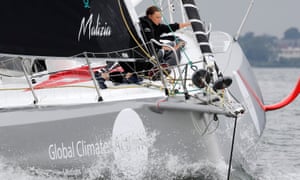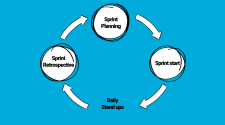Hitching a ride on a sailing boat across the Atlantic might sound like a far-fetched endeavour reserved for the famous and well-connected. But Greta Thunberg has now managed it twice in three months – and her antics appear to be inspiring a growing, if nascent, movement in sail-hitching.
Maritime hitchhiking has hitherto been reserved for sailors looking for experience on different routes and vessels.
But after Thunberg’s transatlantic adventures, numbers have boomed. Daniel Krause, a full-time “cruiser”, helps to run the Sailboat Hitchhikers and Crew Connection Facebook group, which has jumped from 7,000 to nearly 21,000 members since Thunberg’s voyage. “In the past couple of weeks it has skyrocketed,” he said.
Ever wondered why you feel so gloomy about the world – even at a time when humanity has never been this healthy and prosperous? Could it be because news is almost always grim, focusing on confrontation, disaster, antagonism and blame?
This series is an antidote, an attempt to show that there is plenty of hope, as our journalists scour the planet looking for pioneers, trailblazers, best practice, unsung heroes, ideas that work, ideas that might and innovations whose time might have come.
Readers can recommend other projects, people and progress that we should report on by contacting us at [email protected]
People use the site to find crew members for their boat, or to find a vessel to hitchhike on. “It’s mutually beneficial,” says Krause. “You get a mostly free ride and the owner gets someone who can do nightshifts or who can help out with docking, anchoring and boat manoeuvres.” In most instances, hitchhikers just pay for transport to and from the boat, any visas they might need, and contribute to boat running costs like food.
However, Krause has found many of the group newbies don’t have previous sailing experience. “Many people don’t understand about the movement of a boat on the ocean which can overwhelm people with seasickness and make them feel trapped because it’s a very small space and you could be out there for days if not weeks – and once you’re out, it’s almost always too late to turn back,” he says.
“Sailboats can only go with weather and wind. Hitchhikers need to be aware that there are forces way bigger than the will of the people on the boat; it might be that the weather decides for you where you go.”
There are dozens of Facebook groups and sites offering similar services. SailingNetworks was set up in 2004, originally branded as Crew Reunited to help boat crews stay in touch after a voyage. Now budding crew members set up profiles on the site to find captains willing to take them on.
According to company director Jeremy Pocock, “younger people are seeing the opportunities to explore by getting on a boat as much more realistic than they might have done in the past”. He advises that anyone considering boat hitchhiking goes for a test run first, and then goes for a drink with the captain and crew afterwards, to ensure compatibility with both the vessel itself and the other personalities on board.
Lawrence Herbert, a 22-year-old psychology graduate, is currently hitching rides on boats around the world to build up his already quite extensive sailing experience. He’s had some scary incidents over the years, which he says beginners might not be prepared for. “I’ve had a big sail stuck at the top of the mast with too much wind which was pretty terrifying. Someone had to go up to the top of the mast in pretty bad weather and cut the sail down, which is about as bad as it gets.”

He’s currently en route to Southampton, where he’s got a place on a boat heading across the Atlantic to Saint Martin in the Caribbean, and has noticed a huge increase in aspiring boat travellers this year. “I do think the Greta Thunberg effect is huge. There’s an enormous amount of people in Gran Canaria [a popular hub for people seeking passage across the Atlantic], many who don’t have sailing experience, just trying to get on a boat.” He says these people often exchange cooking skills for passage.
The demand could indicate commercial potential for an eco-friendly transatlantic sailing service, says Ross Porter, founding director of ethical travel company VoyageVert.
“There’s no ticketed, fossil-fuel-free way of getting across the Atlantic. Now there’s all of this exciting technology that can be harnessed and applied to a problem that we have in the world, which is moving people sustainably over long distances.”
He is seeking funding to build a sustainable sailing ferry capable of transporting 200 passengers 480 nautical miles in 24 hours – meaning it could transport people from Southampton to New York in around eight days. Porter eventually envisions this as a fleet which could sail a vast network of routes across the globe – and become the future of travel.
A similar revolution is already underway in the shipping industry, which accounts for 2.5% of global carbon emissions, with companies developing strategies to transport goods on emission-free sailing vessels.
For Krause, the increased interest in sailboat travel is a logical consequence of eco-friendly lifestyle trends that have grown in popularity in recent years. “People want to downgrade their consumerism and also travel sustainably, and that’s the perfect combination on a sailboat.”
This article is part of a series on possible solutions to some of the world’s most stubborn problems. What else should we cover? Email us at [email protected]














